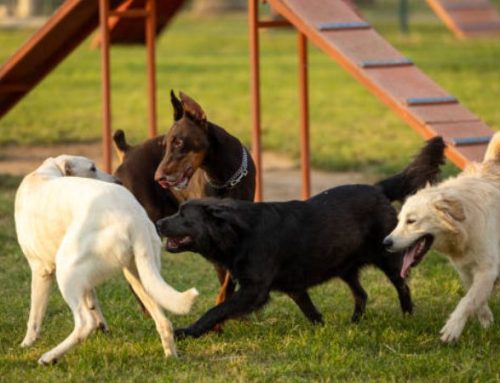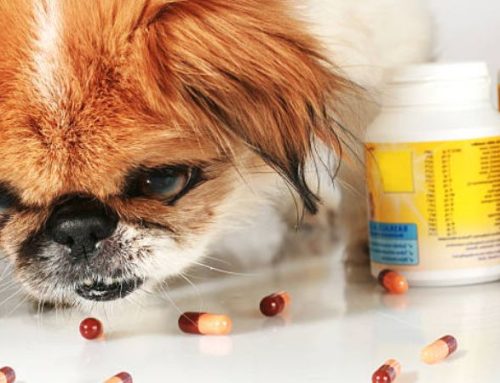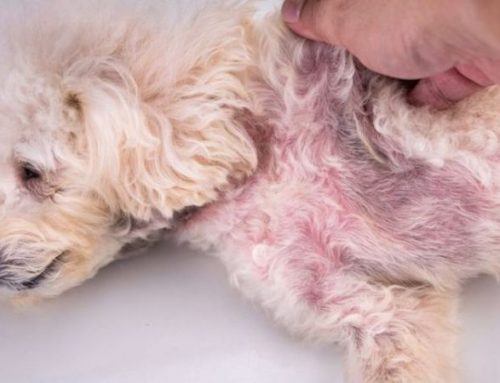Socialising your puppy isn’t just a nice extra it’s one of the most important steps in raising a confident, well-adjusted dog. During the first few weeks of life, your puppy’s brain is rapidly developing, making this the perfect time to introduce them to the world in a safe, positive way. The experiences they have now will shape how they react to people, places, sounds, and everyday situations for the rest of their lives.
This week-by-week socialisation timeline gives you clear guidance on what to introduce, when to do it, and how to make each new encounter a positive one. Whether your pup is eight weeks old and just settling in, or you’re preparing in advance, this checklist will help you build a strong foundation for a happy, confident adult dog.
Understanding Puppy Socialization Stages
1. The Critical Socialization Window (3–16 Weeks)
The first few months of a puppy’s life represent a critical window for socialization, typically spanning 3 to 16 weeks, with the most crucial period occurring before 12 weeks of age. During this time, a puppy’s brain is highly receptive to new experiences, and positive exposures can shape lifelong behavior, confidence, and adaptability. Proper socialization at this stage helps puppies become comfortable with people, other animals, new environments, and everyday sights and sounds they will encounter as adults.
Puppies learning during this window absorb experiences faster and form positive associations more readily. For example, they can learn that strangers, household noises, or different surfaces like tile, carpet, or stairs are safe and non-threatening. They also begin to develop the social skills necessary for interacting with other dogs and humans, reducing the likelihood of fearfulness or aggression later in life.
To make the most of this period, use a puppy socialization checklist by age, gradually exposing your puppy to varied environments, people of different ages and appearances, and safe interactions with other animals. Pair every exposure with treats, praise, and affection to reinforce positive associations. Even brief, controlled experiences like a short visit to a busy park or carrying your puppy through a bustling market can be extremely beneficial during this critical phase.
2. After 16 Weeks: Why It’s Not Too Late
Although the most sensitive socialization window closes around 16 weeks, it’s important to know that socialization is not limited to early puppyhood. Puppies and even young adult dogs can continue to learn and adapt through gentle, positive exposure to new experiences. The key is to approach new situations slowly and patiently, respecting the puppy’s comfort level and gradually expanding their confidence.
For older puppies, begin by introducing them to novel sights, sounds, people, and animals in a controlled environment. Use high-value treats and toys to create positive associations, and allow the puppy to observe before approaching or interacting. For example, if your older puppy hesitates around bicycles, start by standing a safe distance away while rewarding calm behavior, gradually decreasing the distance as confidence grows.
Consistency and repetition are essential. Continue practicing socialization regularly to help your puppy generalize comfort and confidence across different contexts. Even after 16 weeks, ongoing exposure to new people, environments, and experiences can prevent fear-based behaviors and help your dog develop into a well-adjusted adult.
Week-by-Week Puppy Socialization Timeline
3–4 Weeks: Early Environmental Awareness
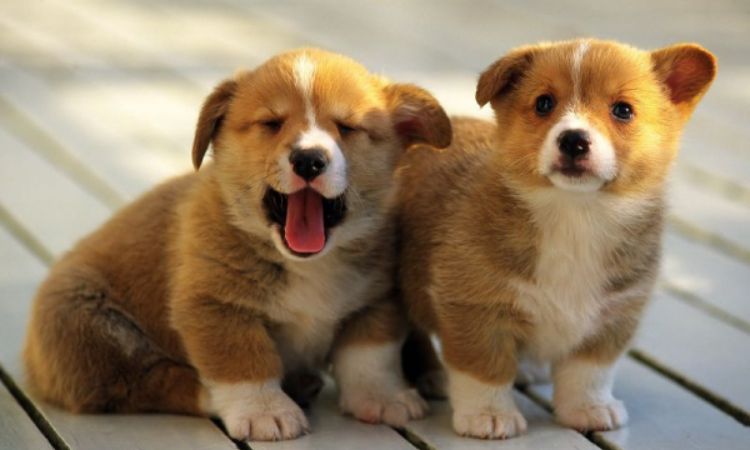
At this stage, puppies are still under the care of the breeder or foster home. While they are not yet ready for full exploration outside the litter, they can begin gentle exposure to their immediate environment.
Focus Areas:
- Gentle handling: Touch their paws, ears, mouth, and tail lightly to get them accustomed to human touch.
- Safe sounds: Introduce soft household noises like vacuums, blenders, or televisions at low volume.
- Basic object exposure: Let them explore a few safe, non-moving objects to stimulate curiosity.
- Early social cues: Puppies begin learning from littermates, including bite inhibition and basic vocal communication.
These early experiences set the foundation for confidence and adaptability as the puppy matures. Positive handling now ensures that future grooming, vet visits, and interactions are less stressful.
5–7 Weeks: Puppy-to-Puppy Interactions Begin
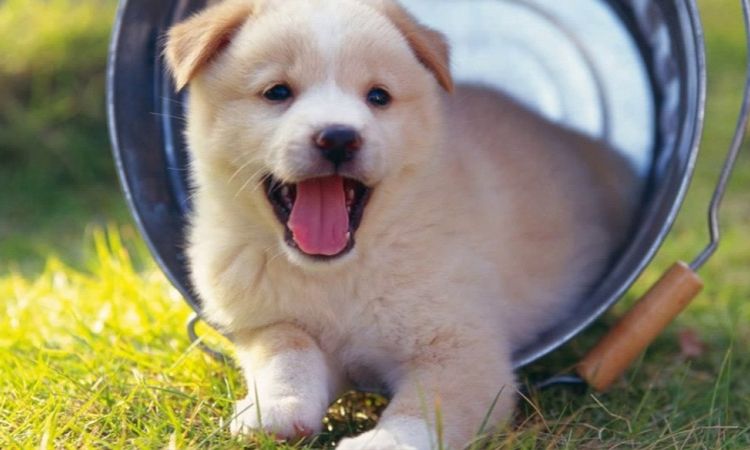
Between five and seven weeks, puppies are increasingly aware of their littermates and the surrounding environment. This period is crucial for learning social skills from other puppies.
Focus Areas:
- Litter socialization: Puppies refine their bite inhibition, body language, and play etiquette through interactions with siblings.
- Household sounds: Gradually introduce more complex noises such as doorbells, running water, and footsteps.
- Early environmental exploration: Safe, supervised exploration of different flooring types (tile, carpet, wood) and objects.
- Positive human exposure: Gentle handling by adults and, if possible, supervised interactions with calm children.
At this stage, puppies are learning how to respond appropriately to new experiences, which reduces fearfulness later in life.
8–10 Weeks: First Exposure with the New Family

Most puppies go to their forever homes around eight weeks. This is a critical period for early bonding and socialization with their new family.
Focus Areas:
- Home environment acclimation: Introduce the puppy to different rooms, household noises, and safe objects.
- Gentle handling by new people: Family members and friends can gently handle the puppy, supporting trust and confidence.
- Short car rides: Begin with brief trips to get the puppy comfortable with travel. Always use a crate, carrier, or secure harness for safety.
- Basic obedience and training: Introduce simple commands like sit and down using food lures and positive reinforcement.
- Early potty training: Consistently guide the puppy to eliminate in the designated area and reward success.
10–12 Weeks: Expanding the Puppy’s World
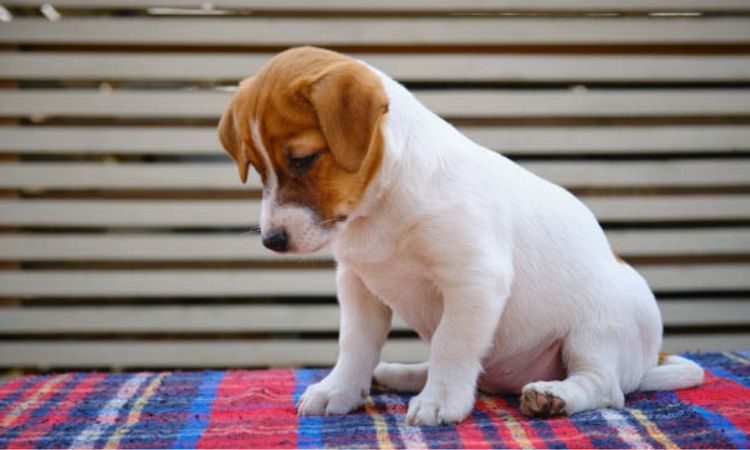
By ten to twelve weeks, puppies are ready for broader, controlled exposure beyond the home. This stage sets the foundation for a confident adult dog that can safely interact with the world.
Focus Areas:
- Controlled dog interactions: Introduce your puppy to healthy, vaccinated dogs in calm, supervised settings. Start with one dog at a time to prevent overwhelm.
- New surfaces and textures: Allow the puppy to walk on grass, concrete, sand, and other safe surfaces to increase adaptability.
- Short public excursions: Visit quiet parks, pet-friendly stores, or outdoor markets, staying mindful of potential health risks.
- Basic handling routines: Continue gentle paw, ear, and mouth handling, as well as leash introduction and short supervised outings.
Tips: Always watch your puppy’s body language for stress or anxiety. Gradually build up the intensity and duration of new experiences rather than overwhelming them.
12–16 Weeks: Building Confidence Through Variety
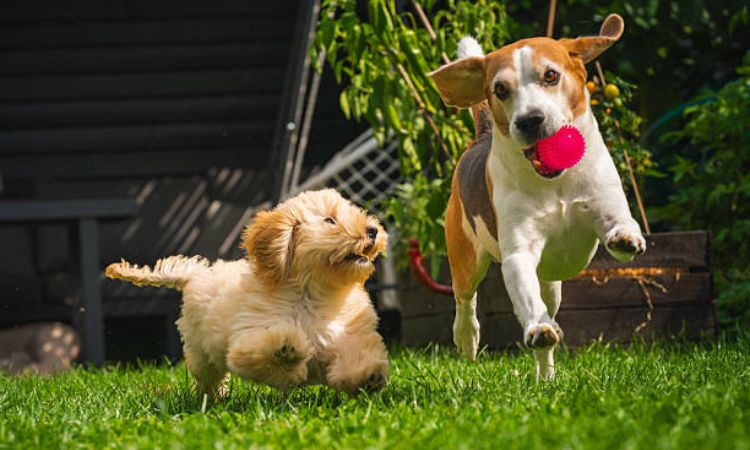
At this stage, puppies are highly curious but may also experience brief periods of caution or uncertainty. Exposure to new experiences should be gradual, controlled, and positive. Key areas of focus include:
- Veterinary Visits: Introduce your puppy to the clinic environment and staff using treats and praise. Opt for fear-free handling when possible.
- Grooming Experiences: Allow gentle brushing, nail trimming, and handling by groomers to make future grooming stress-free.
- Loud Noises: Begin controlled exposure to vacuum cleaners, doorbells, traffic sounds, and other common household noises. Pair each sound with high-value treats and reassurance.
- Children and Traffic: Introduce puppies to children in safe, calm settings and allow brief, positive exposure to traffic sounds or busy streets from a distance.
Tips: Focus on making each new experience positive. If your puppy shows signs of fear—ears back, trembling, avoidance—reduce intensity or distance, and use treats to reinforce calm behavior.
4–6 Months: Reinforcement and Routine
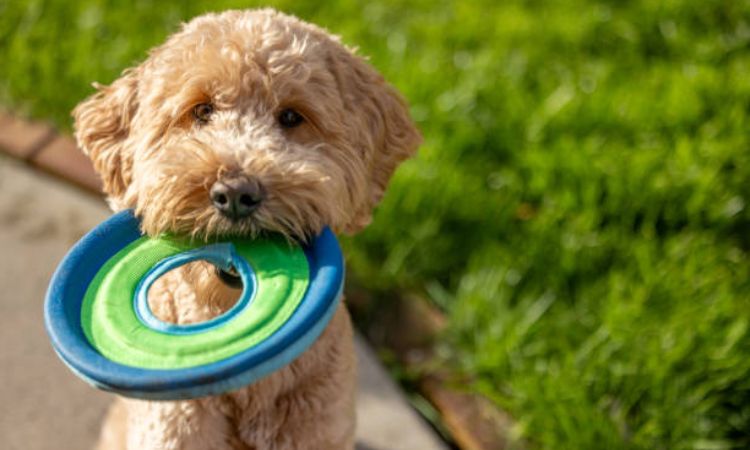
By 4–6 months, puppies have grown more independent and can begin generalizing positive experiences. This stage is ideal for reinforcing socialization routines:
- Continue introducing new people, environments, and objects, such as shopping areas, parks, and different surfaces.
- Encourage calm behavior and impulse control, using positive reinforcement to reward sitting, waiting, and polite greetings.
- Reinforce leash walking, crate comfort, and obedience cues in a variety of settings.
Tips: Regular, short exposures are more effective than long, overwhelming sessions. Consistency helps prevent fear regression.
6–12 Months: Teenage Phase Challenges
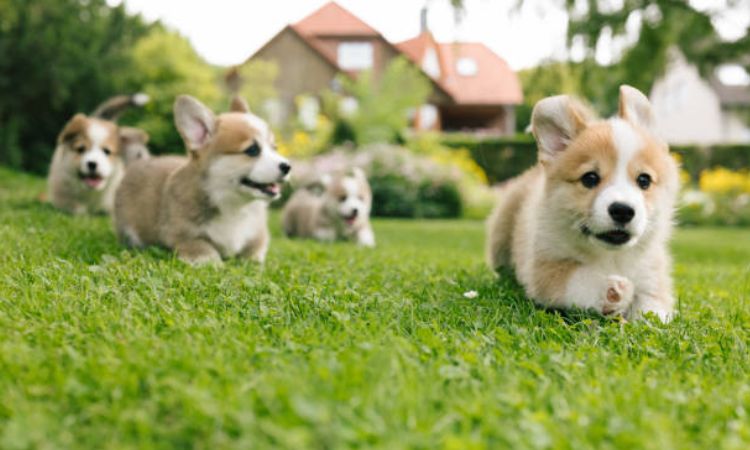
As your puppy enters adolescence, they may exhibit fear regression, increased excitability, and testing boundaries. Socialization remains essential, but it should be paired with structured training:
- Address fear regressions by reintroducing previously positive experiences at a comfortable pace.
- Manage overexcitement by practicing impulse control exercises such as “sit-stay” and “leave it” in real-life situations.
- Introduce controlled play with new dogs, people, and environments while monitoring for stress signals.
Tips: Patience and consistency are crucial. Avoid punishment-based methods, which can increase fear or aggression. Positive reinforcement ensures that your adolescent dog maintains confidence and social skills.
1–2 Years: Adult Confidence and Second Fear Periods
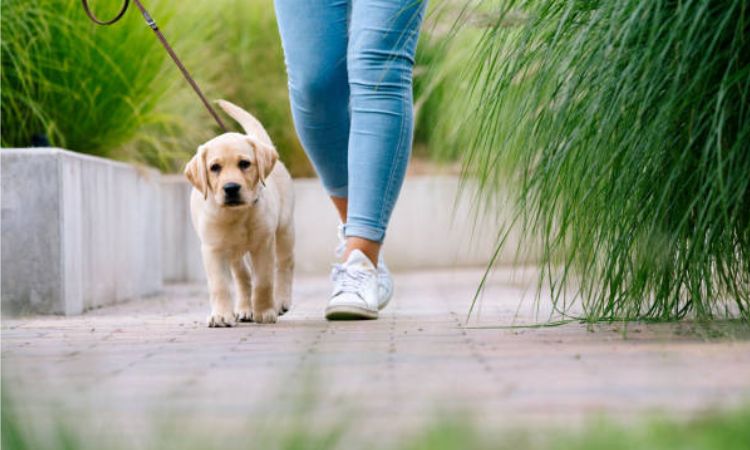
Even after socialization, some dogs experience a second fear period around 18–24 months, often coinciding with adolescence and physical maturity. During this stage:
- Observe your dog for temporary increases in fearfulness toward new people, dogs, or environments.
- Provide reassurance and retraining using positive reinforcement, counter-conditioning, and gradual exposure.
- Continue structured socialization by introducing new activities, environments, and experiences in a safe, controlled way.
Tips: Maintain confidence-building exercises and reward calm, positive responses. Avoid forcing interactions; instead, let your dog engage at their own pace. This approach helps adult dogs retain social skills and prevents long-term behavioral issues.
The Ultimate Puppy Socialization Checklist
A well-structured socialization plan is crucial for raising a confident, adaptable, and well-behaved dog. The following checklist provides a visual and practical guide to exposures by age, ensuring your puppy encounters a wide variety of people, animals, environments, surfaces, and handling experiences. Following this guide can help prevent fearfulness and promote lifelong positive behavior.
1. People
Expose your puppy to people of all genders, ages, and appearances to build comfort with social diversity. Include:
- Genders: Men, women, non-binary individuals
- Ages: Infants, toddlers, children, teenagers, adults, elderly
- Accessories & Styles: Hats, sunglasses, backpacks, coats, strollers, walking aids (canes, walkers)
- Activity Levels: People running, biking, jogging, or walking with pets
Tips: Pair each interaction with high-value treats and praise. Let the puppy approach at their own pace, avoiding forced contact, especially with children.
2. Animals
Socialization should include exposure to a variety of species and ages:
- Dogs: Puppies, adult males and females, small and large breeds
- Cats: Kittens and adult cats, supervised interactions
- Other Animals: Farm animals (chickens, goats, cows), pocket pets (rabbits, guinea pigs)
Tips: Begin with calm, vaccinated animals. Always supervise introductions to prevent negative experiences.
3. Environments
Expose your puppy to a mix of urban, suburban, and rural settings:
- Urban Sounds: Traffic, car horns, motorcycles, sirens, doorbells, skateboards
- Rural Sounds: Farm machinery, animals, open spaces
- Vehicles: Cars, buses, bicycles, scooters, airplanes overhead
Tips: Start at a distance where the puppy feels safe and gradually decrease the distance as they become comfortable. Always use positive reinforcement to create a positive association with new environments.
4. Surfaces
Puppies need experience with different textures and footing to develop confidence in movement:
- Grass (wet and dry)
- Tiles, wood, and laminate floors
- Carpet and rugs
- Gravel, sand, and dirt
- Stairs, ramps, and metal grates
Tips: Encourage exploration at a slow, steady pace. Reward walking on unfamiliar surfaces with treats or praise. Avoid rushing, especially for slippery or uneven surfaces.
5. Handling & Grooming
Early gentle handling is essential to prevent fear of touch and routine care:
- Ears, paws, tail, mouth, and skin pinches
- Brushing, nail trimming, bathing
- Wearing collars and harnesses
- Cradling, gentle hugging, and lifting
- Short car rides or crate introductions
Tips: Always pair handling with positive reinforcement. Begin with short sessions and gradually increase time and complexity as your puppy becomes comfortable.
Common Mistakes to Avoid
1. Forcing Interactions During Fear Stages
Puppies experience natural fear periods, notably around 8–11 weeks and again at 6–14 months, and even later during the second-year fear period. Forcing a puppy to interact with people, animals, or unfamiliar objects during these times can create lasting fear associations. Signs of discomfort include cowering, lip-licking, shaking, turning away, or whining.
Best Practice: Respect your puppy’s pace. Provide distance from frightening stimuli and use positive reinforcement, such as treats and praise, when they voluntarily approach or explore. Gradual, controlled exposure builds confidence without causing stress.
2. Skipping Early Socialization
The 3–16-week window is the most critical period for socialization. Puppies who miss out on exposure to diverse people, animals, surfaces, and environments during this time are more likely to develop fearfulness, anxiety, or aggression as adults.
Best Practice: Start socialization as early as 3 weeks under breeder or foster guidance and continue consistently at home. Even brief, frequent exposures help your puppy learn that new experiences are safe and rewarding.
3. Introducing Too Many New Elements at Once
Overwhelming a puppy with multiple unfamiliar stimuli—such as loud noises, crowded spaces, and strange animals simultaneously—can trigger anxiety and regression. Puppies are highly sensitive during socialization periods, and trying to “do it all at once” may backfire.
Best Practice: Introduce one new experience at a time. Allow the puppy to observe first, then gradually approach at a comfortable distance. Pair each exposure with positive reinforcement and repeat until the puppy demonstrates calm, confident behavior. Gradually build complexity as they become more comfortable.
Related Reads:



